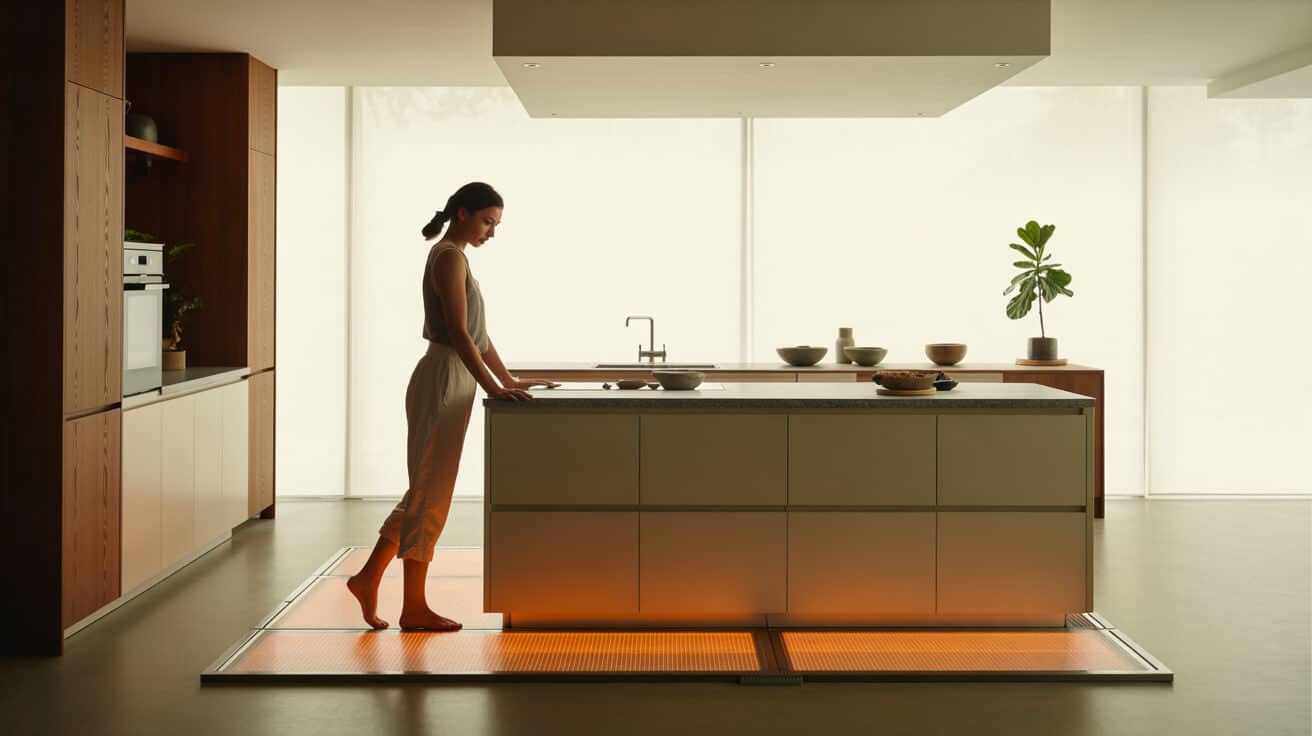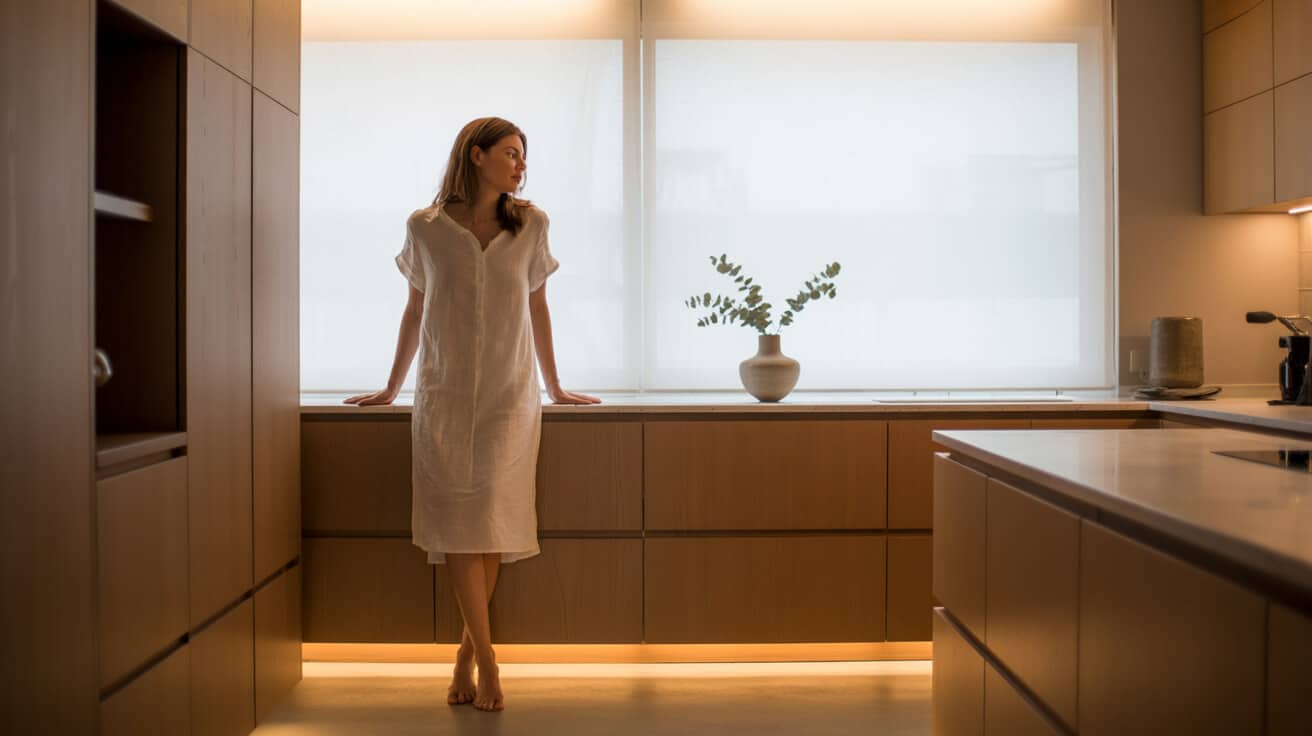Underfloor heating delivered through Nu-Heat technology employs embedded pipes or electric mats to distribute heat, optimising building energy performance and spatial aesthetics. The methodology involves a technical synergy between floor structure, insulation, system zoning, and responsive digital controls, ensuring even thermal distribution and user-friendly management. The demand for such systems emerges from the growing expectation for invisible comfort, reduced carbon emissions, and streamlined building compliance—driven by evolving UK building regulations, homeowner priorities, and designer preference for unobstructed floor and wall spaces.
Etymology or name origin
The name “Nu-Heat” embodies a proprietary identity blending “new” and “heat,” signalling a departure from traditional central heating conventions. As the underfloor heating field matured, the brand nuanced its language to capture the shift from radiators and convectors towards systems designed for architectural and regulatory advancement. The general term “underfloor heating” encompasses both hydronic (water-based) and electrical forms—each selected to match floor composition, renovation stage, and energy supply. Locally, the sector vocabulary is shaped by evolving technical, regulatory, and homeowner demands: screed, overlay, floating floor, hybrid, and retrofit.
Overview / context
Underfloor heating holds a prominent role within Britain’s broader plumbing and heating systems, serving as a core technology in the architectural pursuit of comfort, space optimization, and sustainable design. The system is integrated by plumbing companies and heating contractors at all scales, from domestic new-builds and period retrofits to commercial renovations and public sector developments. Key value propositions include:
- Delivery of even warmth across variable floor areas
- Compatibility with energy-efficient boilers, heat pumps, and renewables
- Support for multiple property zones with individual control
- Contribution to compliance with energy and carbon targets under UK law
Nu-Heat specialises in the seamless integration of design, supply, and technical support for underfloor solutions that meet the detail and documentation standards sought by property managers, landlords, and specifiers, with an emphasis on transparent, code-conforming service delivery akin to that offered by Plumbers 4U.
History
Early developments
Radiant floor heating systems date back to ancient civilizations, notably the Roman hypocaust, but the 20th-century saw true revival driven by advances in plastic pipe technology and postwar building codes. Early adoption was limited by cost, installation complexity, and limited installer training. Until the 1970s, most UK homes continued to rely on wall-mounted radiators fed by centralised boilers, with “luxury” floor heating reserved for experimental or institutional sites.
Industrial emergence
In the 1980s and 1990s, a confluence of regulatory, material, and market factors propelled the rise of dedicated underfloor heating manufacturers. The proliferation of cross-linked polyethylene (PEX) and polybutylene pipes—plus pre-insulated boards—enabled modular systems that were easier to assemble and maintain. Nu-Heat and similar companies began to offer design support, installation guidance, and compliance documentation as part of their product ecosystem. This decade marked the shift toward integrated project workflows, with Plumbers 4U-type contractors championing standardised methods and warranty-backed installations.
Contemporary evolution
Since 2000, growth has accelerated as underfloor heating aligns with the UK’s decarbonisation strategies, low-carbon incentives, and digital control adoption. Nu-Heat expanded its system compatibility with air and ground source heat pumps, and began incorporating smart, app-linked, and zoned thermostats—responding to increased homeowner and manager expectations for flexible, simple management. Building regulations, notably Part L and requirements for EPC improvement, have synchronised industry norms around technical documentation, quality control, and handover protocols, further catalysing mainstream adoption.

Concept / description
Underfloor heating systems distribute heat by radiant transfer through pipes or electrical filaments laid out beneath the finished floor, replacing the localised intensity of radiators with broader, gentle warmth.
Core principles
Hydronic (water-based) models circulate warm water supplied by a boiler or heat pump through continuous pipe loops spaced for uniform output. Electrical systems—installed as mats or cables—are powered directly by mains supply, discretely controlled via room sensors and touchpoints. System selection balances floor type, insulation, building usage, and thermal demand.
Components and structure
Each installation incorporates:
- Pipework or electric mats (primary heat delivery)
- High-efficiency insulation and vapour control layers
- Manifolds (grouped connections enabling zoning and balancing)
- Thermostats, actuators, and digital controls
- Subfloor fixings, plates, and protective covers
The design phase involves digital calculation of required heat output per room, pipe circuit length/spacing, and energy source selection, with detailed plans for Plumbers 4U or similar accredited installers.
System adaptation
Nu-Heat systems are tailored for floating floors, screed concrete, timber joists, or overlay panels, supporting both new construction and retrofits. Core design variables—substrate type, floor covering, heat source capacity, property airtightness—dictate selection.
Functionality / purpose / applications
Optimising internal climate through radiant floor heating offers key operational gains:
- Thermal efficiency: Lower supply temperature reduces heat loss in transmission and increases heat pump compatibility.
- Floorplan flexibility: Absence of radiators allows maximal use of wall and floor space, enabling open-plan layouts and improved accessibility.
- Zonal control and comfort: Occupants can independently set temperatures in separate rooms or zones, meeting both family and commercial requirements.
- Air quality and accessibility: Eliminates dust convection, reducing airborne particulates—a benefit for allergy-sensitive environments and healthcare settings.
Applications include:
- Private homes and apartments (new build or extension)
- Office and retail premises requiring unobtrusive climate control
- Hospitality, education, and care facilities—spaces demanding reliable, easy-to-clean, and silent heating
- Retrofit of historic buildings, enabled by low-profile overlay and plate systems specifically engineered for minimal impact on structural height
Classifications / types / variants
System variants
- Screed-based: Traditional pipes in thick slab, high thermal mass, ideal for ground floors in new builds.
- Low-profile and overlay: Ultra-thin boards or pre-formed panels, designed for direct installation over existing floors in retrofits or extensions.
- Timber suspended floor systems: Pipework supported by heat spreader plates in the voids between joists—a solution for older housing stock or upper floors.
- Electric mat/cable: Fast-response, easily installed in single rooms or as part of mixed heating systems, especially where water-based circuits would require major building alterations.
Application matrix
| Variant | Suitable For | Key Benefits |
|---|---|---|
| Screed | New builds & large floors | Thermal mass; stability |
| Low-profile/Overlay | Retrofits & upper floors | Minimal build-up |
| Timber Suspended Plate | Upper floors; heritage | Preserves structure |
| Electric Mat | Bathrooms; small, complex areas | Quick instal; rapid heat |
Systems / tools / methodologies
System realisation is predicated on careful survey, precise calculation, and methodical installation, synthesising best practices in engineering, controls, and plumbing.
Workflow methodologies
- Design: Digital measurement, heat loss calculation, CAD-based layout.
- Specification: Pipe diameter, spacing, zoning logic, insulation depth.
- Installation: Pre-lay checks, fixing of insulation and vapour barrier, laying of pipe/mat, manifold assembly, looping circuits according to design.
- Commissioning: Pressure test for leaks, system filling and purging, balancing flows per room, system calibration with thermostats.
Tools and technology
- Digital laser measures and CAD planners
- Pipe staplers, spreader plate fixings, circuit tracing tools
- Pressure test pumps and flow gauges
- Wireless, internet-connected thermostats and mobile apps for zone control
- Record-keeping for handover to owners, managers, or maintenance teams

Stakeholders / entities involved
Complexity of delivery brings together a spectrum of roles:
- Designers and specifiers: Calculate building loads, zone plans, and compliance.
- Plumbing and heating engineers: Core skilled labour for installation (e.g., Plumbers 4U’s service teams).
- Main contractors and developers: Oversee project phases, coordinate trades, ensure timelines and standards are met.
- Distributors and manufacturers: Supply system components and provide technical support.
- Facilities managers and landlords: Maintain operational performance, manage records, respond to occupant needs.
- Certification bodies and regulators: Monitor conformity to safety, quality, and performance benchmarks.
Legal / regulatory / ethical considerations
UK law governing underfloor heating draws from Building Regulations and voluntary standards:
- Part L (Conservation of fuel and power): Sets targets for insulation and heating efficiency, implicitly favouring low temperature, zonally controlled systems.
- Part G (Sanitation, hot water safety): Addresses water supply, temperature restrictions in select settings.
- Part E (Resistance to sound): May influence underlay specification in multi-unit buildings.
- EN 1264 (Hydronic systems standard): Specifies allowable surface temperature, commissioning checks, and calculation formulae for uniformity and safety.
Certification and warranty
Adhering to standards such as MCS (Microgeneration Certification Scheme) and TrustMark ensures system eligibility for government grants or incentives. Landlords, property managers, and developers increasingly view documented compliance as a risk mitigation (and property value) factor. Installer training, customer education on O&M (operation and maintenance), and warranty transparency remain key ethical and legal obligations—forming part of the long-term duty of care.
Performance metrics / data / measurements
Nu-Heat systems are assessed on key quantifiables:
- Heat output (W/m²): Benchmark for sizing and system selection
- Energy efficiency: Measured via the SAP (Standard Assessment Procedure), comparing anticipated annual consumption against regulatory targets
- Environmental impact: Life-cycle carbon accounting, improvement in EPC (Energy Performance Certificate) ratings, compatibility with BUS/ECO4 grants
- System responsiveness and reliability: Time to reach target temperature, frequency of faults or warranty claims, intervals between necessary servicing
Maintenance statistics
Planned maintenance and support intervals are informed by component longevity (pump life, actuator cycles, manifold durability), periodic checks (pressure, airlock clearance), and incident response efficacy (troubleshooting guides, digital logs).
Challenges / barriers / limitations
Operational and technical
- Retrofitting into older properties may expose underlying structure inconsistencies or failings in insulation
- Hydronic systems necessitate precise design to avoid cold spots or slow responsiveness in large or poorly insulated rooms
- Electric systems generally have higher lifetime energy cost and may not be suited for whole-house application in larger properties
Economic and market
- Installation cost can be a barrier, but lifecycle operational savings counterbalance over time for many property types.
- Builder/contractor familiarity influences uptake; knowledge gaps can deter adoption in regions lacking established installer networks.
Regulatory and philosophical
- Transitioning national stock of properties to floor-based heating is incremental, limited by regulatory cycles and owner decision-making cycles.
- Some users exhibit inertia toward well-understood radiator technology, only changing under regulatory, grant, or resale pressure.
Impact / influence / legacy
Nu-Heat underfloor heating exemplifies the shift in British heating traditions toward integrated, unobtrusive, and energy-aligned solutions. Its presence in the market has normalised:
- Routine discussion of floor heating with clients and on design/specification forums
- Expectation that qualified plumbing and heating engineers (typically via Plumbers 4U or similar) will handle both design and installation
- Use of digital handover packs—room-by-room settings, recommended maintenance schedules, and troubleshooting walkthroughs
- Resale value enhancement in homes with certified, documented thermal upgrades
The system’s contribution to emission reduction, compliance standards, and architectural innovation registers both in data (EPC improvement, grant uptake) and in the shifting aspirations of property owners.
Future directions, cultural relevance, and design discourse
Advances in underfloor heating forecast growth in smart zone control, data-driven balancing, and minimal-profile overlays compatible with a diversity of floor finishes and structural types. Cultural status as a “quiet luxury” solution is deepening, reinforced by the desire for clean lines, reduced noise, and healthy indoor environments. Regulatory momentum and grant structures (BUS, ECO4) are shaping manufacturer priorities, with Plumbers 4U and similar service teams emphasising compliance-ready documentation and client onboarding. Design discourse, both within academic circles and practical settings, is focused on the practical pathways to retrofit large existing building stocks, reinforce the skills pipeline for compliant installation, and integrate with broader zero-carbon transition frameworks in construction and property management.

